Call with Emilia Sutherland-Netto-20250707_114614-Meeting Recording.mp4
Author: Giuseppe Renga
-
Unit 2: inclusive practices – Intervention
Intervention
Since 2022, in addition to my role as a Technician at the London College of Fashion (LCF), I have been delivering a 4-day course called Adobe Professional Certified (ACP) Photoshop and InDesign to groups of approximately 15 students.
Normally, each session starts at 10:00 in the morning and finishes at 16:30, including a one-hour lunch break and two 15-minute tea breaks. By simultaneously mirroring on a screen what I am doing on my laptop, I show students how to use Adobe Photoshop and/or InDesign, underpinned by theoretical didactic material via a separate presentation.
Besides, I also deliver different workshops as HPL of a length of 2 hours on how to create short movies, posters and GIFs to FBS students in groups of 10 students.
Throughout Unit 2: Inclusive Practice, I have become more aware of new challenges represented by how to integrate disability, learning differences, faith and race into my teaching practices.
Informed by new theories of positionality and intersectionality, I have been spurred to look at my teaching structure through a different lens.
According to Dr. Tara Million (2024), an Assistant Professor in the Department of Indigenous Studies at the University of Lethbridge ‘positionality’ is about reflecting on yourself, who you are and how it influences the approach to certain topics.
My positionality is informed by my experience as an Italian, Christian, male and heterosexual. Is that all? Well, I have been living in the UK for more than 10 years, and I have been an international student among other students from all around the World since 2009. I am passionate about sport, art, photography, adventures, and this surely reflects my positionality more than anything else.
According to Mareike Riedel and Vanessa Rau (2025): “intersectionality allows scholars to critically centre the power relations at play as well as the resulting forms of oppression, marginalisation and discrimination against the backdrop of White and Christian supremacy”.
As mentioned by an article written by Vikki Boliver from Durham University (2022): “the HE curriculum dominated by White European standards canons of scientific and scholarly knowledge, plays a significant role in BAME students’ engagement, belonging and marginalisation. In many cases, ethnic minority students are engaging with a curriculum that does not reflect their socialisation, worldview, history or lived experience”.
To quote Veronica Bamber and Anna Jones (2015): “With a move to mass higher education, the demographics of the student population have changed. There are now many more students. Diversity encompasses language, religion, disability, gender, race, and previous experience”
With the move from a little brunch of FBS based in High Holborn to the new LCF home based in East Bank Stratford, I have been challenged and incentivised by the multitude and diversity of students I am surrounded by.
This melting pot is also confirmed by the last data report released by UAL in June 2025 which shows that at LCF there are 5599 students whom 35% are represented by B.A.M.E. students. The 59% have declared no religion or a belief, followed by 16% of Christians, 4% are Hindu, 4% are Muslim, 4% are Buddhist and so on and so forth. The data on sexual orientation relates to all students (Home and Overseas) reveals that 20% of all LCF students identified as LGBQ+ in 2024/25. Finally, data on disability has disclosed that 16% of our students at LCF are disabled.
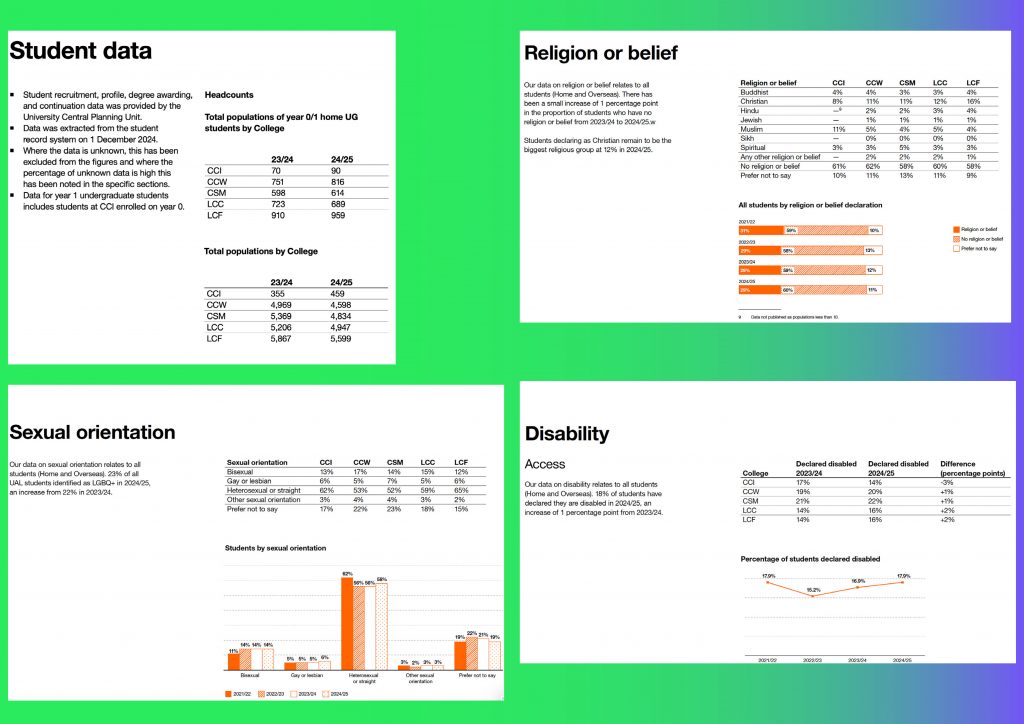
Fig. 1 – UAL, 2025. Equality, Diversity and Inclusion (EDI) report update. London, UK. Illuminated by the surrounding environment, the commencement of my PgCert and in particular by the IP unit I have started integrating into my teaching practices new exemplars that embrace the essence of other cultures, religions, sexual orientation and abilities. Hence, curiosity has been the quintessence of this academic chapter. In order to educate, I must educate myself first, find more, search and research if I want to detach myself from my anchor point.
As the Brazilian pedagogist Paulo Freire (1998, p. 81) reminds us: “the teacher must be clear and content with the notion that the cornerstone of the whole process is human curiosity. Curiosity is what makes questions, know act, ask again, recognise”
For example, helped by the choice of my students who, through a Padlet page, have shared artefacts of predominant artists from their nations and continents, I have embedded into my presentation paintings of the Indian female artist Arpita Singh and the Mexican disabled artist Frida Kahlo. This democratic and sustainable choice has spurred me to delve more into cultures far from the white, Eurocentric vision I have been affected by.
As an international staff member surrounded by international students, I make sure that I build a solid framework which clarifies the aims, objectives and expectations of my teaching sessions, accompanied by examples, exercises, tasks and models of successful practices.
On one of my blog posts about faith, my PgCert peer and colleague from LCF, Emilia Netto (2025) wrote: “When living in a society that is ‘structured in a race, gender, class discriminatory way, how does someone start to bring about change? Is there any way of bringing change beyond the way we act, with kindness, understanding and respect”.
I am very passionate about my job, which couldn’t exist without students. “There is no teaching without learning. One requires the other” (Freire, 1998, p.31). In so doing, I care about students and what they can bring into this World. I cannot be an educator if I cannot develop an attitude of caring and loving toward the student. To quote Brian Arao and Kristi Clemens (2013) my priority is to create “an environment in which everyone feels comfortable expressing themselves and participating fully, without fear of attack, ridicule, or denial of experience”.
In addition, to enhance my students’ didactical experience, I make sure that they learn by interacting with joy and pleasure. As the disabled artist Christine Ann Kim (2025) asserts: “In order to let an audience insert itself, making things humorous has often proven to be good tools, if a work can provoke a laughter, the bar is significantly lowered.”
I remember that my Course Leader, Victor Guillen (2025,) after a peer observation, advised me “to tap a bit more into peer-to-peer interaction and learning to help you manage conceptual, skills and knowledge differences within the group”.
In virtue of this, I have devised a couple of small interventions which have mutated the structure and narrative of the ACP course. With the main idea of reducing the screen exhaustion caused by the nature of this course (Willcock and Mahon 2023) and motivate students to assimilate key concepts, thus I have designed a game called ‘Battlecandy’ to explain the logic behind the Cartesian Plane and in addition I invite and facilitate students, with all the tools needed (e.g. scissors, glue sticks, old magazines) to design physical collages in groups of 3 to explain concepts like layers, shapes, fonts, resolution, etc.
Battlecandy is a reinvented version of Battleship, but the players instead of playing with warships, which I don’t think would be suitable during these uncanny times, they play with edible, colourful and fruity candies. Furthermore, the design of Battlecandy only requires printing some A4 pages and the purchase of packs of candies called Starburst, whilst the Collage task requires the collection of old magazines, scissors, glue stick and a lot of imagination. In both cases, after a trial with my Line Manager Matti Juutilainen, I have been given the green light to insert these 2 new tasks in my ACP courses.
As Dr Kirsten Hardie (2015) observes, “I use objects to develop students’ skills and confidence in research”. Many other authors have navigated the enhancing possibilities that object-based learning can deliver to pedagogy (Boys, 2010).
As Chatterjee (2010) observes: ”Objects can be employed to facilitate the acquisition of communication, teamwork and for inspiration”.
With this in mind, I had to intersect my positionality as an extrovert, colourful and chaotic teacher with that of my students and let them collaborate, intertwine and entangle their positionalities. I couldn’t be a teacher without being and exposing who I really am. Notwithstanding, I have to confess that “in a very diverse classroom, a teacher can no longer assume that something will work or be understood and accepted” (Bamber & Jones 2015).
The ACP courses have mainly been designed to interact with a screen and a digital workspace, but to paraphrase our colleagues from CSM Judy Willcocks and Kieran Mahon (2023), the sole use of technology cannot improve the pedagogical experience of our students.
Freire reminds us that:
The practice of right thinking is fundamental in dealing with new challenges posed by technology today, as is the freedom to create. An education where freedom to create is viable necessarily must encourage overcoming any fear of responsible adventure; it must go beyond a mediocre taste for repetition for repetition’s sake (Freire, 2004, p. 84).
I will implement this intervention to facilitate the co-creation, interaction and participation of my students. Is this intervention going to make my teaching methods more engaging? Is it going to facilitate my students throughout the learning process? Or on the contrary, is it going to create more confusion? Are students going to perceive it as something funny and entertaining or as trivial and boring?
The way students will evaluate me is going to affect my modus operandi. Surely, I am driven by the curiosity of how students will collaboratively play and explore through different aesthetic and linguistic methodologies.
My peer Mikolai Berg (2025) in one of his comments reminds me: “By designing sessions that include students’ own lived experiences and identities, you not only support meaningful knowledge exchange but also create space for connection and shared understanding”.
Stimulated by the words of Mikolai and moving forward, to make my intervention more inclusive, I will add written instructions in English and other idioms which explain how to play Battlecandy and how to create a physical collage and then scan, import and edit the digital version in Photoshop.
References
Arday J, Branchu C, Boliver V. What Do We Know About Black and Minority Ethnic (BAME) Participation in UK Higher Education? Social Policy and Society. 2022; 21(1):12-25. doi:10.1017/S1474746421000579.
Arts.ac.uk. (2025). Equality, Diversity and Inclusion (EDI) report update. [online] Available at: https://canvas.arts.ac.uk/News/264626/equality-diversity-and-inclusion-edi-report-update [Accessed 12 Jul. 2025]
Arts.ac.uk. (2024). From Safe Spaces to Brave Spaces by Arao and Clemens | PgCert 2024. [online] Available at: https://syahrizalshafie.myblog.arts.ac.uk/2024/03/17/from-safe- spaces-to-brave-spaces-by-arao-and-clemens/.
Bamber, V & Jones, A 2015, Challenging students: enabling inclusive learning. in H Fry, S Ketteridge & S Marshall (eds), A Handbook for Teaching and Learning in Higher Education: Enhancing Academic Practice. 4th edn, Routledge, Abingdon, pp. 152-168. <https://www.routledge.com/A-Handbook-for-Teaching-and-Learning-in-Higher-Education-Enhancing-academic/Fry-Ketteridge-Marshall-Fry-Ketteridge-Marshall/p/book/9780415709965>
Berg, M. (2025). Blog comments. [online] Available at: https://inclusivepractices.myblog.arts.ac.uk/2025/06/21/unit-2-inclusive-practices-race/ [Accessed 2 Jul. 2025]
Boys, J 2010, Creative Differences: deconstructing the conceptual learning spaces of Higher Education and museums. in B Cook, R Reynolds & C Speight (eds), Museums and Design Education: looking to learn, learning to see. Ashgate, Farnham, pp. 43-60.
Chatterjee, H. (2010) Object-based learning in higher education: The pedagogical power of museums. University and Museums and Collections Journal, 3, 179-8. [online] Available from: http://edoc.huberlin.de/umacj/2010/chatterjee-179/PDF/chatterjee.pdf [Accessed 11 July 2025].
Freire, P. (2004). Pedagogy of Indignation. Routledge.
Freire, P. (1998). Pedagogy of Freedom: Ethics, democracy, and civic courage. Rowman & Littlefield Publishers.
Guillen, V. (2025). Unit 1: Peer Observation. LCF, London.
Hardie, K. (2015). Innovative pedagogies series: Wow: The power of objects in object- based learning and teaching. [online] Available at: https://s3.eu-west- 2.amazonaws.com/assets.creode.advancehe-document- manager/documents/hea/private/kirsten_hardie_final_1568037367.pdf.
Netto, E. (2025). Blog comment. [online] Available at: https://inclusivepractices.myblog.arts.ac.uk/2025/05/24/post-2/ [Accessed 5 Jul. 2025]..
Wellcome Collection. (2025). 1880 THAT: Christine Sun Kim and Thomas Mader. [online] Available at: https://wellcomecollection.org/press-release-1880-that-exhibition.
Willcocks, J. and Mahon, K. (2023). The potential of online object-based learning activities to support the teaching of intersectional environmentalism in art and design higher education. Art, Design and Communication in Higher Education, 22(2), pp.187–207. doi:https://doi.org/10.1386/adch_00074_1.
List of images
- Fig. 1 – UAL, 2025. Equality, Diversity and Inclusion (EDI) report update. London, UK.
- Fig. 2 – Renga, G. 2025. Welcome in all languages. London, UK.
- Fig. 3 – Renga, G. 2024. Vitruvian Man. London, UK.
- Fig. 4 – Renga, G. 2024. InDesign Process Screenshot. London, UK.
- Fig. 5 – The Chairman, Lalit Kala Akademi, Ministry of Culture, Shri K.K. Chakravarty conferring the fellowship on eminent artist Arpita Singh, at a function, in New Delhi on October 10, 2014. Available at: https://en.wikipedia.org/wiki/Arpita_Singh [Accessed 26 May 2025].
- Fig. 6 – Renga, G. 2025, Arpita Singh Exhibition @ Serpentine Gallery. London, UK.
- Fig. 7 – Anderson, E. 2019. Frida Kahlo Painted Using Assistive Technology (and So Can You). [online] AT3 Center. Available at: https://at3center.net/2019/07/08/frida-kahlo-painted-using-assistive-technology-and-so-can-you/. [Accessed 26 May 2025].
- Fig. 8 – Fay, N. 2021. Quem foi Frida Kahlo? [online] Pinterest. Available at: https://uk.pinterest.com/pin/2322237301016281/ [Accessed 26 May 2025].
- Fig. 9 – Renga, G. 2025. (X, Y ) axes. London, UK.
- Fig. 10 – Renga, G. 2025. I Photoshop, therefore I am. London, UK.
- Fig. 11 – Renga, G. 2025. Battleship. London, UK.
- Fig. 12 – Renga, G. 2025. Battlecandy. London, UK.
- Fig. 13 – Sturbust Candies.
- Fig. 14 – Renga, G. 2025. Collage intervention trial. London, UK.
- Fig. 15 – Renga, G. 2025. Collage intervention trial. London, UK.
Acronyms
Acronyms Meaning ACP Adobe Certified Professional B.A.M.E. Black, Asian and minority ethnic CSM Central Saint Martins FBS Fashion Business School GIF Graphic Interchange Format HPL Hourly Paid Lecturer IP Inclusive Practices LCF London College of Fashion UAL University of the Arts London Words count
1640
-
Unit 2: Inclusive Practices – Race
Race
I was born in a small town near Napoli in the southern part of Italy, and I grew up in a community where diversity didn’t exist or was mainly dominated by a monoculture.
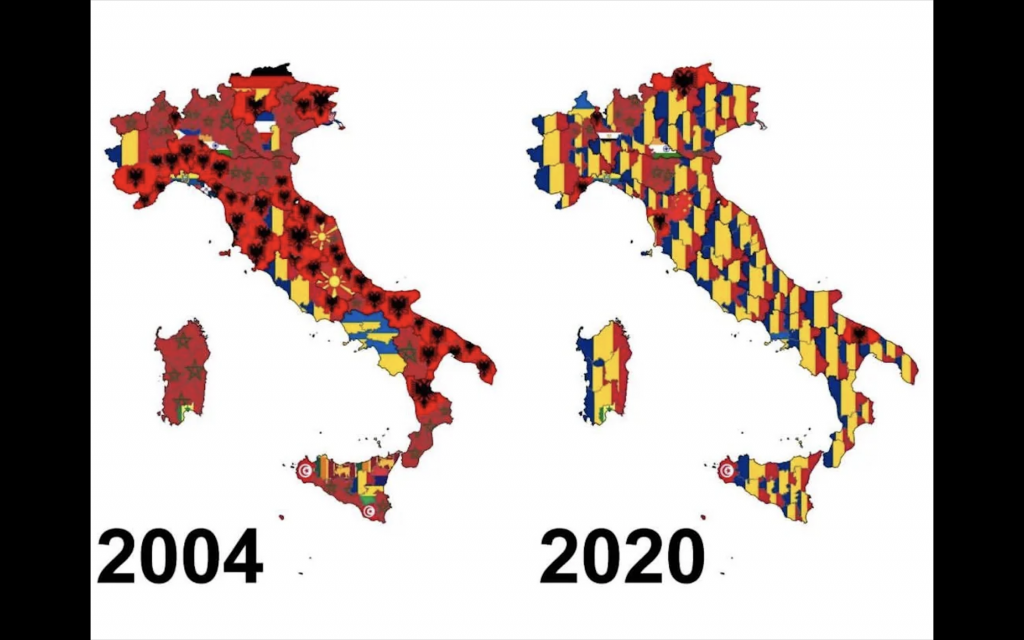
Fig. 1 – Italy before and after (most migrants in each Region). Nonetheless, in the early 90s’ I had the fortune to watch for the first time in my life ‘Do the Right Thing’, which is one of the cinematographic masterpieces directed by the Black-American movie director Spike Lee and released in 1989.
I was mesmerised by how different communities represented by Blacks, Asians, Latinos, and Italians were living together in Brooklyn and at the same time, worried about this fragile conviviality as perfectly depicted by Spike Lee.
In one of the greatest scenes of Do the Right Thing, Pino (John Turturro) and Mookie (Spike Lee) begin a conversation about how Pino’s heroes (Magic Johnson, Eddie Murphy and Prince) are all Black, and he is unaware of his unconscious racism. The rest of the scenes see a concatenation of racist stereotypical statements against other cultures and races.

Fig. 2 – Do The Right Thing. 1989. Pino talks to Mookie. As a southern Italian, the only real encounter with ‘racism’ was when some guys from Milan, which is the economic and financial epicentre of Italy, called my friends and me ‘peasants’ and my answer was: “It is thanks to peasants that you are not starving”. To quote Isabelle Stanger: “the idiot is the one who always slows the others down, who resists the consensual way in which the situation is presented…. the idiot will neither reply nor discuss the issue” (2005).
That experience really clicked something because it was powerful and vivid. As the Chief Global Inclusion Officer at Warner Bros. Discovery, Asif Sadiq (2023) asserts during a TED talk,”If we are going to teach people about diversity….let them have experiences”.
Nonetheless, education and history taught at school have always modified the narrative and distorted realities by glorifying the conquistadores and colonisers and depicting the colonised as uncivilised.
At the beginning of episode 3 season 4 of the American TV series produced by HBO in the late 90s and early 2000s’ ‘The Sopranos’, Silvio Dante driven by his pride for Cristopher Columbus ignores that the explorer also exterminated thousands of native-Indians and vehemently attacks those ones who want to protest against the Columbus Day parade.

Fig. 3 – The Sopranos. 2002. Cristopher Columbus. As the French philosopher Michael Foucault (1983) stated: “The strategic adversary is fascism… the fascism in us all, in our heads and in our everyday behaviour”
The lack of perspectives and points of view have conceived bias and prejudices since the very stages of our lives leading people towards supremacy, power and domination. The erosion of this monochrome framework and paradigm and the opening of new paths are the main challenges to bring into our education system.
In one of the tasks that I have devised for the ACP Photoshop, I encourage students to make physical collages in groups of 3 and then digitalise them.
In virtue of this, students from different corners of the World have explored each others’ imaginations and legacy instead of merely facing an apathetic screen.
These little tasks, combined with other activities, will surely shift our perceptions towards other races, bringing us closer. As Mr Fingers sings in the song ‘Can You Feel It’ (1986): “You may be black, you may be white; you may be Jew or Gentile. It doesn’t make a difference in our House and this is fresh!
References
Do The Right Thing (Race Rant Scene). (2008). YouTube. Available at: https://www.youtube.com/watch?v=cOxOR3x8FBQ [Accessed 12 Nov. 2019].
Foucault. (1983). Preface. Retrieved from https://libcom.org/files/Anti-Oedipus.pdf(open in a new window).
HouseNationChicago (2007). Mr Fingers – Can You Feel It. [online] YouTube. Available at: https://www.youtube.com/watch?v=tFuujExs03A [Accessed 21 Jun. 2025].
Reddit.com. (2025). Reddit – The heart of the internet. [online] Available at: https://www.reddit.com/r/Maps/comments/1jpb35g/italy_before_and_after_most_migrants_in_each/ [Accessed 21 Jun. 2025].
Stengers, Isabelle. The Cosmopolitical Proposal. In Making Things Public: Atmospheres of Democracy, Bruno Latour and Peter Weibel (eds.). Cambridge, MA: The MIT Press, 2005.
TEDx Talks (2023). Diversity, Equity & Inclusion. Learning how to get it right | Asif Sadiq | TEDxCroydon. YouTube. Available at: https://www.youtube.com/watch?v=HR4wz1b54hw.
The Soprano (2011). Columbus Day – The Sopranos HD. [online] YouTube. Available at: https://www.youtube.com/watch?v=jBD61skoMk8https://www.youtube.com/watch?v=jBD61skoMk8 [Accessed 21 Jun. 2025].
-
Intervention Idea
In support of the video, I have also shared the slides that follow…
Summary
According to Bowleg (2012), ‘Intersectionality is a theoretical framework for understanding how multiple social identities such as race, gender, sexual orientation, socioeconomic status, and disability intersect at the micro-level of individual experience’.
As I have mentioned in the previous Unit’s blogs since 2022, I have been working as a Learning Technologist at the London College of Fashion (LCF) and I have been delivering a 4-day course called Adobe Professional Certified (ACP) Photoshop and InDesign.
As mentioned by an article written by Vikki Boliver from Durham University the HE curriculum dominated by White European standards and canons of scientific and scholarly knowledge. In many cases, ethnic minority students are engaging with a curriculum that does not reflect their socialisation, worldview, history or lived experience.
In particular, the shocking murder of George Floyd in Minneapolis in 2020 I have been digging more about the need for decolonising our HE curriculum “by ending the domination of Western epistemological traditions, histories and figures”(Boliver, 202).
In virtue of this, I have noticed how I needed to unmoor my knowledge and delve into the cultures, faiths and nationalities of students who come from all around the World.
During the delivery of my course I made an introduction Welcome slide in all the languages and others related to the ‘inspiring’ context for the presentation with artworks of the Indian female artist Arpita Singh and Mexican disable artist Frirda Khalo who at the age of six contracted polio which eventually made her right leg grow shorter and thinner than the left. The illness forced her to be isolated from her peers for months, and she was bullied.
I brought in my teaching context to spur our students and to tell them that they are capable of achieving the impossible if they only want to.
References
Arday J, Branchu C, Boliver V. What Do We Know About Black and Minority Ethnic (BAME) Participation in UK Higher Education? Social Policy and Society. 2022;21(1):12-25. doi:10.1017/S1474746421000579
BBC (2020). George Floyd: What Happened in the Final Moments of His Life. BBC News. [online] 16 Jul. Available at: https://www.bbc.co.uk/news/world-us-canada-52861726.
Bowleg, L. (2012) The problem with the phrase women and minorities: intersectionality—an important theoretical framework for public health. American Journal of Public Health, 102, 1267–1273.
UAL (2024). Creating accessible digital content. [online] UAL. Available at: https://www.arts.ac.uk/students/creating-accessible-digital-content [Accessed 26 May 2025].
Zahra Jamshed (2016). From ‘cow’ to cover girl, model Winnie Harlow is changing beauty standards. [online] CNN. Available at: https://edition.cnn.com/style/article/winnie-harlow-interview-model-qa [Accessed 26 May 2025].
List of images
Fig. 1 – Floyd, G. 2020. Selfie. Minneapolis, USA.
Fig. 2 – Renga, G. 2025. Welcome in all languages. London, UK.
Fig. 3 – Renga, G. 2024. Vitruvian Man. London, UK.
Fig. 4 – Renga, G., 2024. InDesign Process Screenshot. London, UK.
Fig. 5 – Renga, G, 2022. Hair. Suwon, South Korea.
Fig. 6 – The Chairman, Lalit Kala Akademi, Ministry of Culture, Shri K.K. Chakravarty, conferring the fellowship on eminent artist Arpita Singh, at a function, in New Delhi on October 10, 2014. Available at: https://en.wikipedia.org/wiki/Arpita_Singh [Accessed 26 May 2025].
Fig. 7 – Renga, G. 2025 Arpita Singh Exhibition @ Serpentine Gallery. London, UK.
Fig. 8 – Anderson, E. (2019). Frida Kahlo Painted Using Assistive Technology (and So Can You). [online] AT3 Centre. Available at: https://at3center.net/2019/07/08/frida-kahlo-painted-using-assistive-technology-and-so-can-you/.
Fig. 9 – Fay, N. (2021). Quem foi Frida Kahlo? [online] Pinterest. Available at: https://uk.pinterest.com/pin/2322237301016281/ [Accessed 26 May 2025].
-
Unit 2: Inclusive Practices – Faith
Faith
I started writing this post just a few hours later. I received an envelope from the Italian consulate that will allow me and all my compatriots to better 5 laws concerning workers’ and immigrants’ rights. Each referendum question coincides with a different card colour. The yellow card, in case the ‘Yes’ wins, is going to be reduced from 10 to 5 years the time of legal residence in Italy of the non-EU adult foreigner for the request for the granting of Italian citizenship (Fig. 1 and 2).
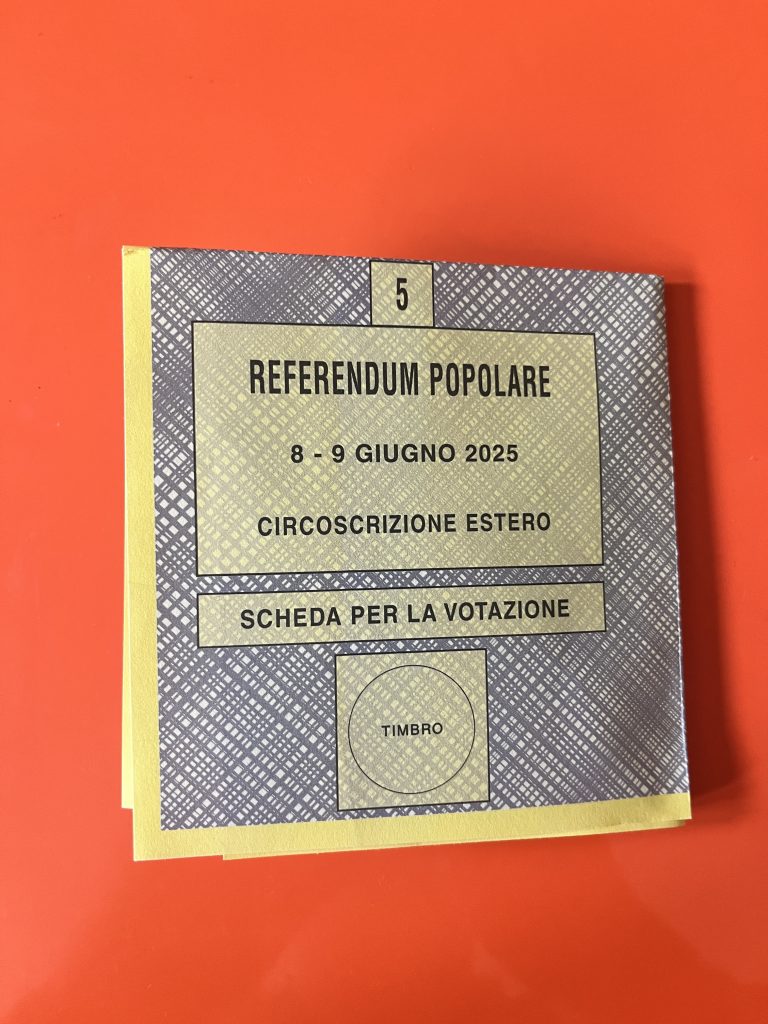
Fig. 1 – Renga, G. 2025. Referendum 2025. 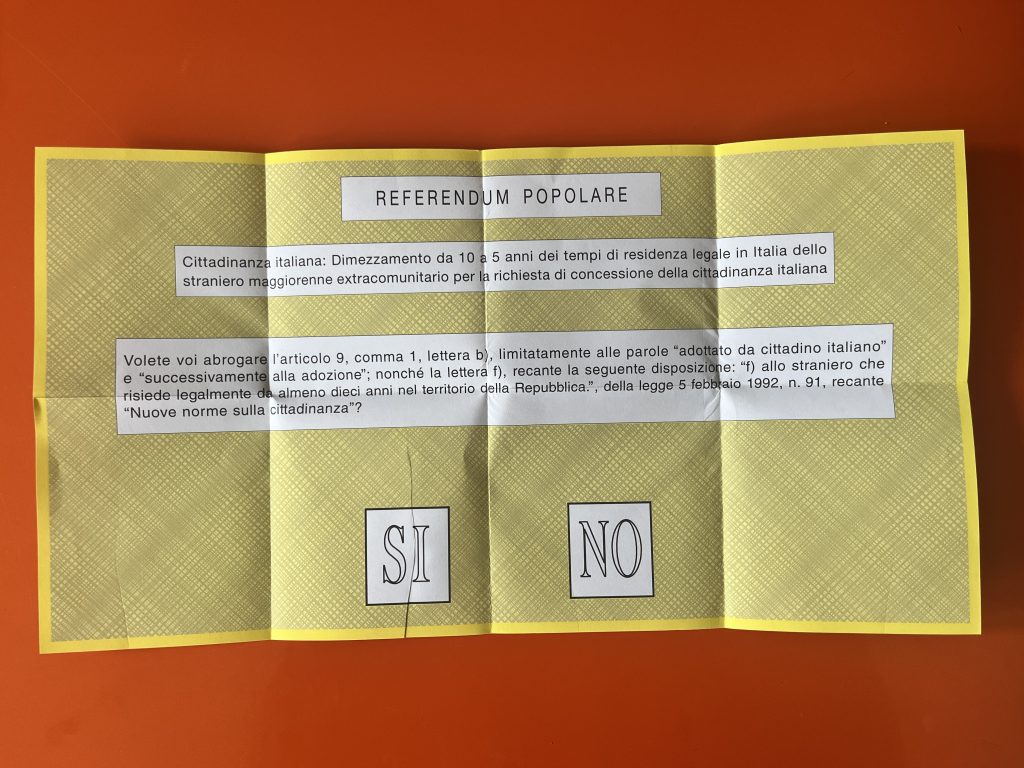
Fig. 2 – Renga, G. 2025. Referendum 2025. I started my research and noticed how Italy is still not aligned with the rest of the most advanced democracies and European countries on this matter (Fig. 2). The abrogation of the previous law will allow other citizens of this World to be granted essential rights (e.g. freedom of movement, right to vote and many other civil and political rights).
As a white European man who has experienced many privileges, it would be an act of violence, racism and hypocrisy hindering other humans from acquiring my same rights.
In the end, am I also not an immigrant who, as a nomad, travelled to another country to live, study, work and build a better future for myself?
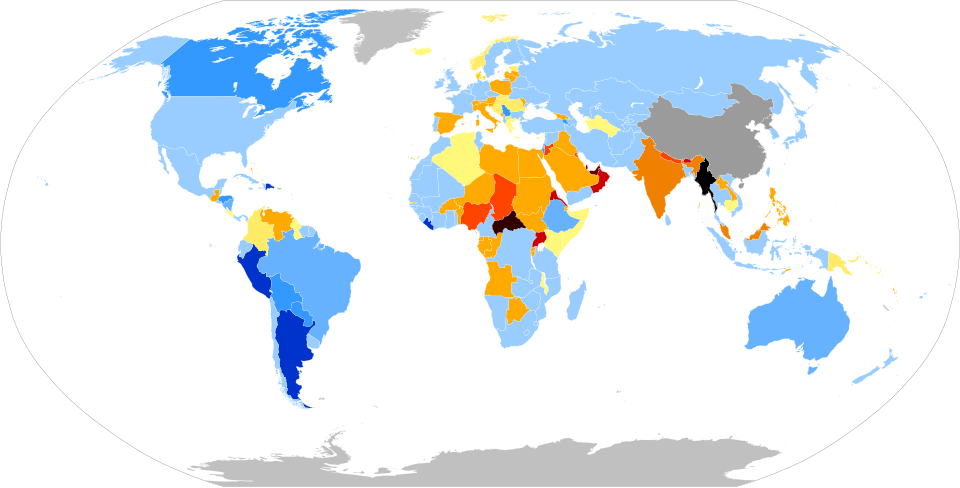
Fig. 3 Wikipedia. 2025. Naturalization Residence Requirements by Country. To paraphrase an article written by Riedel and Rau, the control over migrants represents another facet of the race-religion intersection and how it is deployed to protect the ‘purity’ of the white European gene. In virtue of this, we have noticed how white and Christian Ukrainian refugees were treated way better than Muslim Afghan, Iraqi, Libyan, Palestinian, Somali, Sudanese and Syrian refugees. Thus, the question is, aren’t they also humans escaping from bombs, dictators and famine?
In the aftermath of the 9/11 events in New York, we have been constantly brainwashed by perpetual anti-Islam propaganda, which has led to the construction of higher walls, sharper barbed wires and nationalist misfortunes like the advent of Donald Trump, ‘Muslim Ban’ and Brexit.
And what’s going on at UAL? On September the 25th 2024 the newly appointed chancellor Clive Myrie who is also an ‘experienced’ BBC journalist called one of our students ‘lunatic’ and ‘fucking idiot’ after the student accused him “to be complicit in the genocide of the Palestinian people” through his “biased reporting” (Fig. 4).
Fig. 4 Myrie, C. 2024. F***ing idiot. I couldn’t believe how our main representative, who was supposed to be the wisest person in that room, reacted towards one of our students. In response to the loss of temper of Mr. Myrie in my everyday tasks as a Technician, Teacher and HPL at LCF I constantly seek to maximise the engagement of all students of all faiths in the learning environment when I work either in the Open Access by sharing didactical material like movies and documentaries (Fig. 5) or presentations that link faith with fashion campaigns (Fig. 6).
As also advocated by the guidance of Advance HE, I avoid stigmatisations and stereotypes about religions, and I constantly enrich my presentation with a diversified gamut of didactical materials which explore different beliefs and increase awareness among our students towards other cultures and religions.
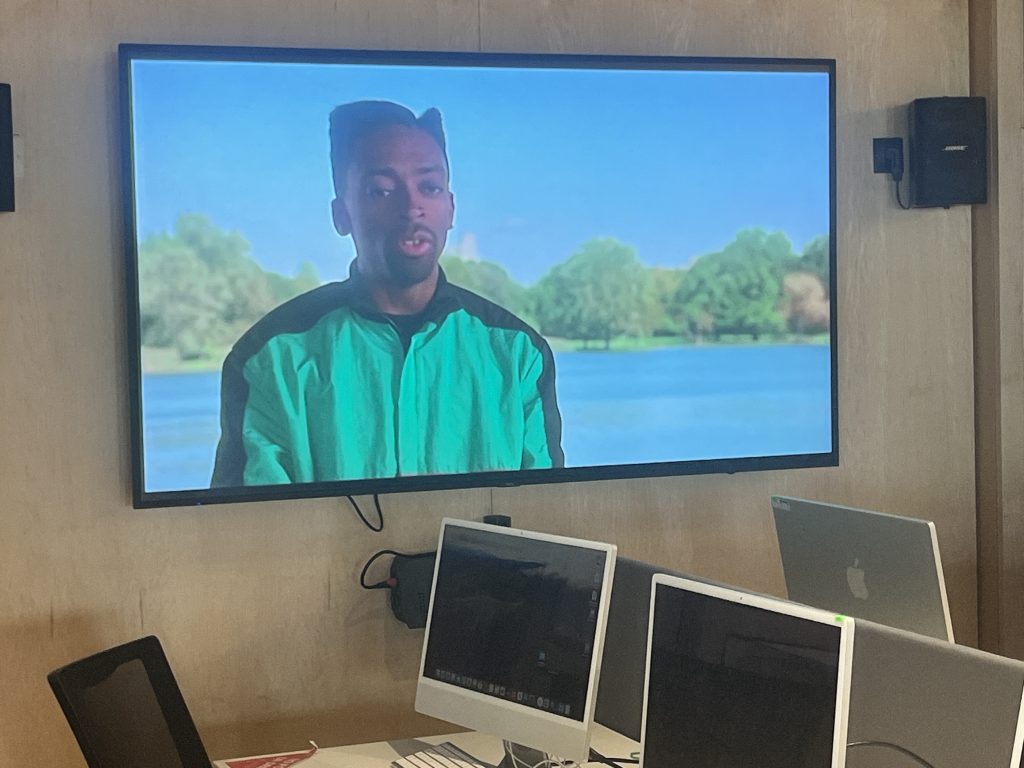
Fig. 5 – Renga, G. 2025. Spike Lee in Mo Better Blues. 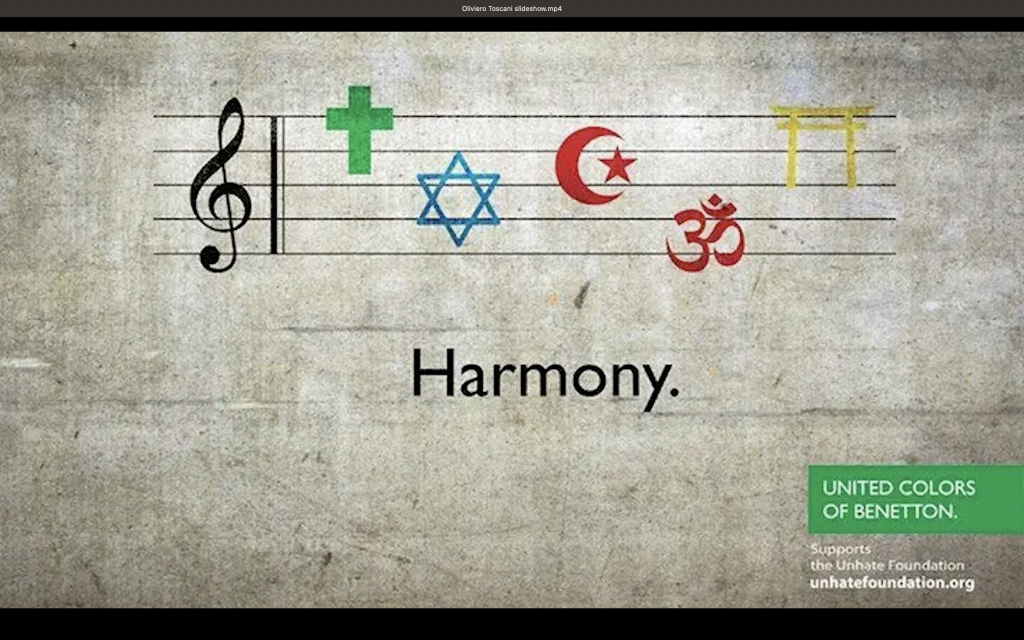
Fig. 6 – Toscani, O. 1991. Harmony .
References
Riedel, M., & Rau, V. (2025). Religion and race: the need for an intersectional approach. Identities, 32(3), 388–408. https://doi.org/10.1080/1070289X.2025.2476300
Centro di Ateneo per i Diritti Umani. (2025). Abrogative Referendums: Voting on Labour and Citizenship Set for June 8 and 9. [online] Available at: https://unipd-centrodirittiumani.it/en/news/abrogative-referendums-voting-on-labour-and-citizenship-set-for-june-8-and-9 [Accessed 24 May 2025].
Middle East Eye (2024). BBC newsreader Clive Myrie calls pro-Palestine student a ‘fucking idiot’. [online] YouTube. Available at: https://www.youtube.com/watch?v=Boq-9eJ7Gdg [Accessed 24 May 2025].
Wikimedia.org. (2024). File: Naturalization Residence Requirements by Country (Years of Residence).svg – Wikimedia Commons. [online] Available at: https://commons.wikimedia.org/wiki/File:Naturalization_Residence_Requirements_by_Country_(Years_of_Residence).svg [Accessed 24 May 2025].
www.advance-he.ac.uk. (n.d.). Religion and belief: supporting inclusion of staff and students in higher education and colleges | Advance HE. [online] Available at: https://www.advance-he.ac.uk/knowledge-hub/religion-and-belief-supporting-inclusion-staff-and-students-higher-education-and.
-
Unit 2: Inclusive Practices – Disability
Jason and the Adventure of 254
Just a few months ago, I walked from my humble abode in South London to the unknown. I embraced trajectories new to my routine cycle journey, mainly guided by London’s chaotic urban architecture but also by the avoidance of crowds and noisy encounters. To quote Chris Jenks: “ In the derive, the explorer of the city follows whatever cue, or indeed clue, that the street offers as an enticement to fascination”.
For the relief of my feet, I ended my journey at the Wellcome Collection, a marvellous gallery where art and medicine are idiosyncratically merged by exhibiting works of artists affected by physical and/or mental illnesses and by exploring the past, present and future of health.
I thoroughly submerged myself in one of the exhibitions called ‘Jason and the Adventure of 254’ conceived by the Yorkshire-based disabled artist Jason Wilsher-Mills. Surrounded by colourful and gigantic sculptures, dioramas, and paintings I was catapulted back into my childhood made of comics, toys and arcade games (Fig.1). The presence of the virus carried by toy soldiers disseminated around represented the illness of the artist who has been affected since the age of eleven chronic fatigue syndrome resulting in hospitalisation and left him paralyzed from the neck down for 5 years. During his time in the hospital, Jason learnt to paint with his mouth supported by his mum who became his hero, muse and the main figure of many artifices.

Fig. 1– Renga, G. 2025. Jason and the Adventure of 254 Inspired by Jason’s mum, I started cogitating about what I could do better to support students affected by disabilities, but at the same time how to create an environment that would naturally support and include all sorts of students without being aware of their disabilities whenever I teach them how to use creative software or by simply comprising their needs in the design of a poster or signage.
With the beginning of my new PgCert unit called ‘Inclusive Practice,’ I started familiarising myself with terms like ‘intersectionality’ and ‘positionality’.
Kimberlé Crenshaw’s article introduces the concept of intersectionality to analyse how race, gender, and other identity markers interact to shape the lived experiences of women of colour — particularly Black women — in ways that are qualitatively different from the experiences of white women or Black men, resulting in Black women being erased or deprioritized in both struggles.
According to Dr. Tara Million (2024) an Assistant Professor in the Department of Indigenous Studies at the University of Lethbridge ‘positionality’ is about reflecting on yourself, who you are and how it influences the approach to certain topics.
In the classroom, I started considering my positionality and in particular how students’ positionalities could impact the teaching sessions and how crucial is to give voice and empower all the participants within a safe space. To quote the Nigerian-born British television presenter and Paralympian athlete Ade Adapitan (2020) ”If we give people the opportunity to shine, the sky is the limit and as an educator to some extent the height of these limits will depend on how I will be able to interact and intersects my visions with those of my students.
References
Crenshaw, K. (1991). Mapping the Margins: Intersectionality, Identity Politics, and Violence against Women of Colour. Stanford Law Review, 43(6), pp.1241–1299. doi:https://doi.org/10.2307/1229039.
Jenks, C. (2017). Visual Culture. Routledge.
Ulethbridge (2024). Positionality with Tara Million. [online] YouTube. Available at: https://www.youtube.com/watch?v=nkVghbzpNlo&list=PLQeVzgrfSrvE_SCl3yqvIGDLoDRq6VeRZ&index=4 [Accessed 29 Apr. 2025].
Wellcome Collection. (2024). Jason and the Adventure of 254. [online] Available at: https://wellcomecollection.org/exhibitions/jason-and-the-adventure-of-254.
Www.youtube.com. (n.d.). Ade Adepitan gives amazing explanation of systemic racism. [online] Available at: https://www.youtube.com/watch?v=KAsxndpgagU [Accessed 10 May 2024]
-
Hello world!
Welcome to myblog.arts. This is your first post. Edit or delete it, then start blogging!
